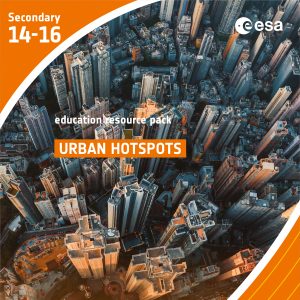Urban Hotspots
In this set of three activities, students will learn how the built environment leads to the urban heat island effect and how Earth observation can be used to monitor this effect and support attempts to reduce it. In the first activity, students explore visual temperature data for a city and use it to identify some of the causes of urban heat islands. The second activity introduces the principles behind the measurement of land surface temperature and applies this to calculating the effect of using different materials in cities. In the final activity, students use the Climate from Space web application and downloaded data to compare temperatures and trends in an urban and rural environment.
Subject Geography, Science, Physics, Earth Science
- Describe the urban heat island effect and list some of its consequences
- Identify aspects of the built environment that enhance and reduce the urban heat island effect
- Relate the behaviour of these aspects to the physics of heat transfer
- Carry out calculations to show how measurements of thermal radiation can be converted to temperature values
- Relate emissivity values of a range of materials used in cities to brightness temperatures
- Analyse and present data from a large data set using a spreadsheet
- Create a report to summarise and explain conclusions drawn from analysed data
- Information sheet 1 (2 pages, second page optional)
- Student worksheet 1
- Internet access
- Outline maps of a local urban area (optional)
- Image processing software or coloured pencils
- Large sheets of paper (optional)
- Climate from Space web application: Urban Hotspots story (optional)


Did you know?
The urban heat island effect is a phenomenon that leads to temperatures in cities often being higher than those in surrounding rural areas. This effect is amplified during heatwaves, as the materials used to create the built environment have high heat capacities and this limits the amount of cooling that takes place each night. Growing urban populations and the effects of climate change mean that more and more people will be affected by this over the coming decades.

Highways of the Oceans – Sea currents and the connection to climate
Brief description In this set of three activities, students will use an multimedia module to learn about sea currents, the...
Is ozone good or bad? -The discovery of the Antarctic ozone hole
Brief description In this set of three activities, students will learn about ozone and the impacts – good and bad...
Paxi – The Greenhouse effect
Brief description:Join Paxi as he explores the greenhouse effect to learn about global warming. In this video, targeted at children...
Urban Hotspots
Brief description In this set of three activities, students will learn how the built environment leads to the urban heat...


